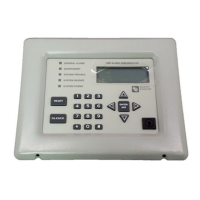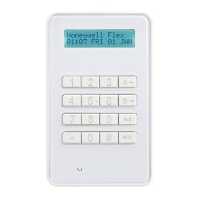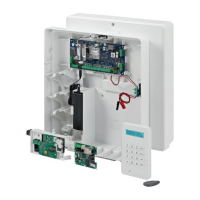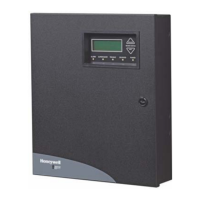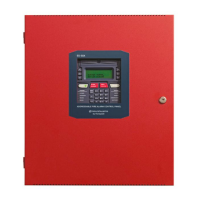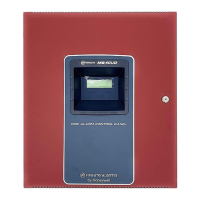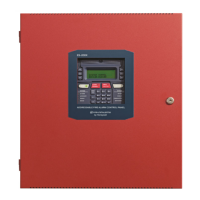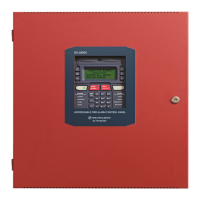IFP-75/IFP-75HV Installation/Operation Manual — P/N LS10147-001SK-E:D 06/25/2021 95
Point Programming
SWITCH
(cont.)
MAN_PULL Use this switch type for manual pull stations. This input is always latched. The switch can
clear only when an alarm is reset.
WATERFLOW Latching
Non Latching
Use this switch type for monitoring water flow in a Sprinkler System. Switch closure will
cause a sprinkler alarm. Water flow switches can be programmed as latching or non-
latching.
You can program a delay of up to 90 seconds to be used with a water flow switch. The
delay allows for normal, brief changes in Sprinkler System water pressure. The water flow
alarm will not activate unless the switch is active for the programmed delay time.
Note: Waterflow delay of the FACP and the waterflow device shall not exceed 90 sec-
onds.
If a delay is used, the System begins counting down when the switch closes. If the switch
opens (restores) before the timer expires, a water flow alarm is not generated. If the water
flow switch remains closed after the timer expires, a water flow alarm will be generated.
SUPERVSY Latching
Non Latching
Use this switch type for tamper monitoring of sprinklers and other fire protection devices. If
a contact closes, a sprinkler supervisory event will be generated. Supervisory switches
can be latching or non-latching.
FIRE DRILL System-level, non latching switch. This switch is an alternative way of causing a fire drill. It
has the same operation as the fire drill option available from the annunciator. When the
switch is activated, a fire drill begins; when the switch is de-activated, a fire drill ends.
SILENCE System-level switch provides an alternate way to silence the System; same effect as
pressing the Silence key.
RESET System-level switch provides an alternate way to reset the System; same effect as
pressing the Reset key.
PAS_ACK Positive acknowledge switch. This switch must be used in zones programmed as Positive
Alarm Sequence (see Table 9.2).
If an acknowledge switch closes when an alarm or trouble condition is not already in
progress, a trouble will occur.
You must use a UL listed normally open, momentary switch type. The switch must be rated
at 5V, 100 mA (minimum) and be used with an EOL resistor for supervision.
ZN_AUX1 Latching Use these switch types if you want to monitor special zone-level conditions.
Non Latching
ZN_AUX2 Latching
Non Latching
SYS_AUX1 Latching Use these switch types if you want to monitor special system-wide conditions.
Non Latching
SYS_AUX2 Latching
Non Latching
DETECT SW Used to monitor conventional 4-wire detectors, a contact closure will generate a detector
alarm event.
SWITCH
(cont.)
TAMPER Latching Performs identically to a supervisory switch, but will be indicated as a tamper switch on the
LCD annunciator.
Non Latching
MAN REL Manual release switch, typically a pull station.
ILOCK Interlock release switch input.
CO DETECT SW CO Detector Switch
CO SUPERVISORY
DETECT SW
CO Supervisory Detector Switch
STATUS PT Status Point Switch
NOTIF OUTPUT PT Select Group Output Point, a general use notification type. Use for driving standard notification
appliances.
AUX CONST Use constant power for applications that require a constant auxiliary power source. Power
is always present at Constant circuits.
AUX RESET Use for auxiliary power, resettable applications. See Section 4.13.2 (subsection,
Resettable Power) to learn how this option operates.
AUX DOOR Use for auxiliary power, door holder applications. For example, if you were using an
auxiliary power supply for door holders, you would use this option. See Section 4.13.2
(subsection, Door Holder Power) to learn how this option operates.
Type
Selection
Function Latching Option Comments
Table 9.4 Point Programming for Internal SLC Module (Continued)
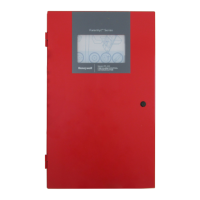
